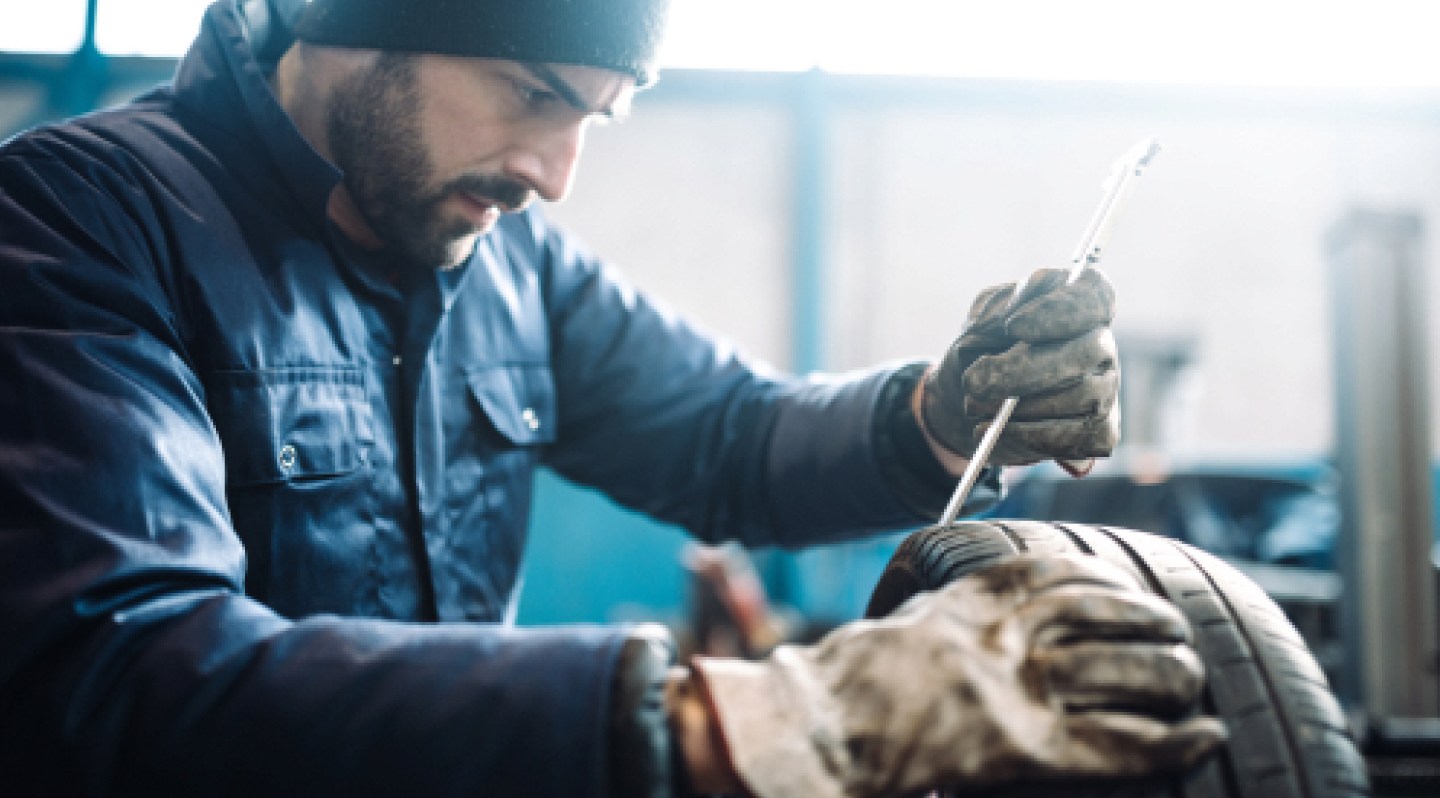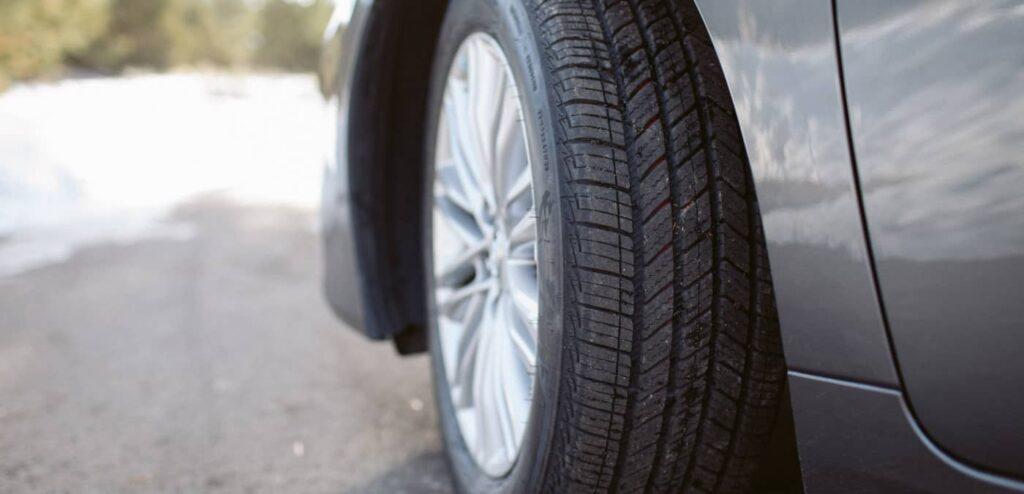Tire tread depth has a direct impact on how a vehicle performs in different driving conditions. shallower tread depths provide less grip and traction on wet or icy roads, and can lead to longer stopping distances and increased risk of skidding or sliding. Deeper tread depths improve traction and performance in off-road or muddy conditions, but can cause increased wear on paved roads.
Most drivers don’t think about their tires until they have a problem. But tire tread depth can have a big impact on your driving, especially in different conditions.
For example, did you know that driving in the rain can reduce your tire tread depth by up to 50%?
That’s because water can cause your tires to slip and skid, which wears down the tread.
Snow and ice can also impact tire tread depth. In fact, just an inch of snow on the ground can reduce traction by up to 30%.
And if you’re driving on icy roads, your tires could slide right off the pavement.
Of course, you can’t always avoid driving in these conditions. But it’s important to be aware of how they can impact your tires.
If you’re ever in doubt, err on the side of caution and slow down. Your safety is more important than getting to your destination a few minutes faster.
Tyre tread depth tested: New VS Worn Tyre
Are Different Tire Treads are Designed for Different Road Conditions?
Different tire treads are designed to provide different levels of traction on different road surfaces. Tires with a more aggressive tread pattern will typically provide better traction on loose or slippery surfaces, while tires with a smoother tread pattern will provide better traction on paved surfaces.
How Does Tread Work in Relation between a Tire And the Road?
When you drive your car, the weight of the vehicle presses down on the tires. The round shape of the tire helps it to roll forward, but it also creates a lot of friction between the tire and the ground. That’s why your car has treads – raised patterns on the surface of the tire that provide extra grip by channeling water and debris away from the contact patch.
The amount of traction (grip) that a tire has depends on three main things:
1. The type of rubber compound used in the tread
2. The depth of the tread
3. The pattern or design of the tread
So when you’re shopping for new tires, be sure to pay attention to those three factors. In general, summer tires have shallower tread depths and softer rubber compounds than winter tires.
That’s because they need to provide good grip on dry roads, but they don’t need to be as durable or able to handle as much snow and ice.
Which of the Following Driving Behaviors Can Cause Abnormal Tire Wear?
One of the most common causes of abnormal tire wear is improper inflation. When your tires are underinflated, they flex more as you drive and generate excessive heat. This can cause the tread to break down prematurely and lead to bald spots or even blowouts.
Another driving behavior that can cause abnormal tire wear is overloading. Your tires are designed to support a certain amount of weight, and if you exceed that limit, it puts unnecessary stress on the tread and sidewalls. This can cause them to crack or rupture, especially if you’re driving on rough roads or in extreme temperatures.
If you frequently make hard stops or take sharp turns, that can also cause premature tire wear. The centrifugal force generated by these maneuvers puts extra strain on the tires, which can lead to tread separation or other damage. So it’s important to take things easy on your tires whenever possible.
Of course, sometimes abnormal tire wear is simply due to old age or poor quality materials. If you’re not sure what’s causing your tires to wear down prematurely, it’s best to consult with a professional mechanic for diagnosis and repair.
Is Deeper Tread Depth Better for Snow?
Most people think that deeper tread depth is better for snow, but that’s not always the case. Deeper tread can actually provide less traction on packed snow and ice because it can act like a wedge, forcing the tire up and out of the snow. It’s also more likely to collect stones and other debris, which can reduce traction even further.
That’s why many winter tires have shallower tread depths than all-season tires.

Credit: gomotive.com
What is the Minimum Tread Depth for Drive Tires
The Minimum Tread Depth for Drive Tires is 4/32nds of an inch. This is the minimum amount of tread that is legally allowed on your drive tires in the United States. Anything less than this and you will be pulled over and ticketed.
This depth is important because it helps to ensure that your tires have enough traction to grip the road and keep you safe while driving.
What is the Minimum Tread Depth for Front Tires Cdl
The federal government requires that all commercial vehicles have a minimum tread depth of 4/32nds of an inch on the front tires. This is to ensure that the driver has good traction and can stop safely in an emergency situation.
Semi Drive Tire Tread Depth
Most car owners know that it’s important to check their tire tread depth regularly. But what many don’t know is that there’s a difference between passenger tires and semi truck tires when it comes to tread depth. Here’s what you need to know about semi truck tire tread depth.
The minimum tread depth for passenger tires is 4/32 of an inch, but for semi trucks, the minimum tread depth is 6/32 of an inch. That may not seem like a big difference, but it can make a big impact on your safety on the road.
There are a few reasons why the minimum tread depth is higher for semi trucks.
First of all, they tend to carry much heavier loads than passenger vehicles, which puts more wear and tear on the tires. Additionally, they typically travel longer distances than passenger cars, which also contributes to more wear and tear.
Because of this, it’s important to check your semi truck tire tread depth regularly and replace them when necessary.
If you wait too long to replace your tires, you could be putting yourself at risk while out on the road. So make sure you stay up-to-date on your maintenance and keep your Semi Truck Tires in good condition!
Federal Dot Tire Regulations
The federal government has enacted a number of regulations to ensure the safety of commercial vehicles on the nation’s highways. One area of regulation that is particularly important is tires. The Department of Transportation (DOT) has established standards for tire design and performance, and requires that all commercial motor vehicles (CMVs) have tires that meet these standards.
There are two main types of DOT-regulated tires: new tires and retreaded tires. New tires must be manufactured in accordance with DOT standards, and must be marked with the proper DOT symbol. Retreaded tires must also meet DOT standards, but they are not required to be marked with the DOT symbol.
DOT-regulated tires must be able to carry a certain amount of weight, depending on their size. They must also have a tread depth that meets or exceeds minimum standards. In addition, they must be free from defects such as cracks, bulges, or exposed cord materials.
Tires that do not meet these requirements are considered unsafe and cannot be used on CMVs. If a CMV is found to have unsafe tires, the driver may be cited and fined, and the vehicle may be placed out of service until the problem is corrected.
To ensure that your vehicle’s tires are in compliance with federal regulations, it is important to purchase them from a reputable source.
Be sure to check the tire’s sidewall for the proper DOT markings before you buy it.
Tread Depth Helps a Tire Have the Proper Traction
Most drivers know that having proper tire traction is important for safe driving, but many don’t know how to measure it. That’s where tread depth comes in. Tread depth helps a tire have the proper traction by providing a clear indication of how much rubber is actually touching the road.
The recommended minimum tread depth for passenger vehicles is 4/32 of an inch, but some experts recommend 6/32 or even 8/32 for better traction on wet roads. You can check your tread depth by using a penny – if Abe Lincoln’s head is visible at the bottom of your tread when inserted upside down, your treads are shallow and you should consider replacing your tires soon.
Of course, even with sufficient tread depth, all tires will eventually need to be replaced.
But making sure your tires have adequate tread will help ensure safe driving conditions and could potentially save your life.
Conclusion
How Different Driving Conditions Impact Tire Tread Depth
Tire tread depth is an important safety feature that helps your car grip the road and maintain traction. The depth of the tread on your tires can be affected by a number of factors, including the type of driving you do, the conditions of the roads you drive on, and even the climate.
Here’s a look at how different driving conditions can impact tire tread depth.

